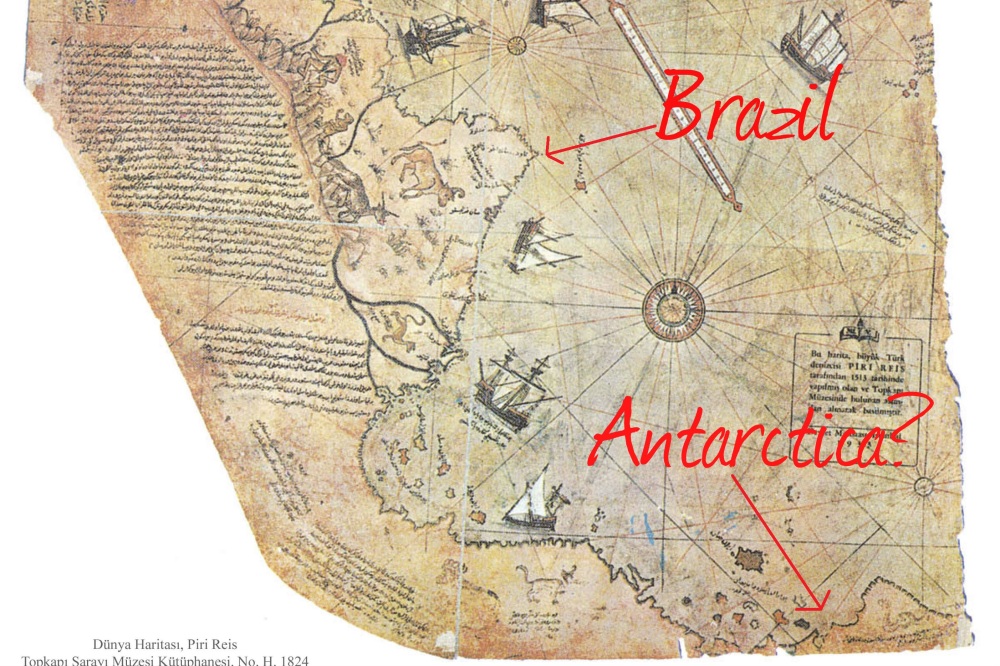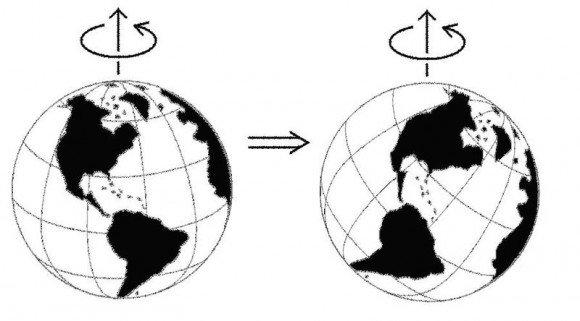
Something is wrong with our recent history of Antarctica
http://www.science-frontiers.com/sf045/sf045p13.htm
Although we are told that Antarctica has been Ice bound for 15 million years there has been found recent looking combustible and buoyant wood.
Mr. Peter Web and co-workers have discovered that along 13000 KM of the Transantarctic Mountains there are shrubs and pollen and the remains of trees. They guess that the wood is only 3 million years old and was found within 400 miles of the South Pole.
It has been argued that the mean temperatures at the time of growth were -12 degrees C and that earth temperatures were higher. A flurry of theory patching has erupted and explanations like meteor impact washing the wood inland and wind-blown pollen abound.
The mean temperature today is about –40C. A worldwide rise in today’s temperature sufficient to grow these plants/trees would mean a heat disaster in the tropics.
“Fossil wood is abundant in Cretaceous and early Tertiary sediments of the northern Antarctic Peninsula region. Temperatures 7 to 8C”
http://64.233.183.104/search?q=cache:0pQZQdsy_pAJ:www.missouri.edu/~macleodk/frances_Ant.pdf+antarctic+wood+trees+shrubs&hl=en&gl=uk&ct=clnk&cd=2
“The rocks Ashworth brought back from the same site in 1995 contained beetles, insects, molluscs and a fly that had never been found in Antarctica before. “
http://antarcticsun.usap.gov/oldissues2003-2004/Sun122803/leafyPast.htm
The northern-most landmass, in Northern Greenland has a similar situation with the remains of forests, the stumps of trees still embedded and upright.
Forests in the frost

Professor Jane Francis of the University of Leeds is an intrepid explorer who has followed in Scott’s footsteps. She has spent 10 field seasons in Antarctica collecting fossil plants and received the Polar Medal from the Queen in 2002.
“I still find the idea that Antarctica was once forested absolutely mind-boggling”, she told the BBC.
“We take it for granted that Antarctica has always been a frozen wilderness, but the ice caps only appeared relatively recently in geological history.”
One of her most amazing fossil discoveries to date was made in the Transantarctic Mountains, not far from where Scott made his own finds.
She recalled: “We were high up on glaciated peaks when we found a sedimentary layer packed full of fragile leaves and twigs.”
These fossils proved to be remains of stunted bushes of beech. At only three to five million years old, they were some of the last plants to have lived on the continent before the deep freeze set in.
Tree rings in fossil wood (Jane Francis) Annual rings in fossil wood reveal Antarcticas subtropical past
However, other fossils show that truly subtropical forests existed on Antarctica during even earlier times. This was during the “age of the dinosaurs” when much higher CO2 levels triggered a phase of extreme global warming.

“Go back 100 million years ago and Antarctica was covered in lush rainforests similar to those that exist in New Zealand today,” said Dr Vanessa Bowman who works with Francis at the University of Leeds.
“We commonly find whole fossilised logs that must have come from really big trees.”
Professor Francis has been polishing thin slices of these logs to reveal the “annual rings” in the wood. Studying these tree-rings sheds light on ancient climate.
Dark secrets
Possibly the weirdest and most baffling feature of the polar forests was their adaptation to the Antarctic “light regime”. Near the pole, night reigns all winter long while in the summer, the sun shines even at midnight.

Professor David Beerling of the University of Sheffield, and author of Emerald Planet, explained the challenge that Antarctic trees must have faced in this unusual environment: “During prolonged periods of warm winter darkness, trees consume their food store,” he said. And if this goes on for too long, they will eventually “starve”.
To understand how trees survived against the odds, Professor Beerling has been investigating the kinds of plants that once grew on Antarctica. These include trees like the Ginkgo, a living fossil. http://www.bbc.co.uk/news/science-environment-12378934
It has been known for a long time that fossil flora from the late Paleozoic to the Tertiary is from warmer climes than expected from the current latitude and even the presumed paleolatitude of Antarctica according to the plate tectonics paradigm. Such discoveries include no widespread winter freezing in the early Cretaceous,9 large tree rings that suggest a warm-temperate rain forest in the early Cretaceous to early Tertiary,10,11 supposed in situ, vertical trees with large rings and no frost rings in a warm polar Permian climate,12 dinosaur fossils in Antarctica3 and dwarf beech trees in the Transantarctic Mountains near 1,800 m elevation at 85°S latitude from the late Pliocene, indicating a cool climate but still much warmer than today.13
 The new report adds to the paradox in that it compares the trees from the late Permian with those from the following middle Triassic. What they found was that the rings show similar structure, implying similar growing conditions, over the supposed tens of millions of years. These trees were even similar to trees from the early Permian from Victoria Land, Antarctica. This result was surprising because the paleoclimate during the two periods is considered to have been very different. For instance, Antarctica as well as other Southern Hemisphere continents were supposed to be in the grip of a huge ice age in the early Permian, the last of four major pre-Pleistocene ice ages. http://creation.mobi/the-paradox-of-warm-climate-vegetation-in-antarctica
The new report adds to the paradox in that it compares the trees from the late Permian with those from the following middle Triassic. What they found was that the rings show similar structure, implying similar growing conditions, over the supposed tens of millions of years. These trees were even similar to trees from the early Permian from Victoria Land, Antarctica. This result was surprising because the paleoclimate during the two periods is considered to have been very different. For instance, Antarctica as well as other Southern Hemisphere continents were supposed to be in the grip of a huge ice age in the early Permian, the last of four major pre-Pleistocene ice ages. http://creation.mobi/the-paradox-of-warm-climate-vegetation-in-antarctica
Satellite Helps Detect Massive Rivers Under Antarctica
http://www.sciencedaily.com/releases/2006/04/060422120954.htm
British scientists have discovered rivers the size of the Thames in London flowing hundreds of miles under the Antarctica ice shelf by examining small changes in elevation, observed by ESA’s ERS2 satellite, in the surface of the oldest, thickest ice in the region, according to an article published in Nature this week. The finding, which came as a great surprise to the scientists, challenges the widely held assumption that sub glacial lakes evolved in isolated conditions for several millions of years and raises the possibility that large floods of water from deep within the ice’s interior may have generated huge floods that reached the ocean in the past and may do so again…….
You may/or may not remember that the Russians were threatening to drill a hole into sub glacial Lake Vostok in Antarctica hoping to find signs of ancient life. The Americans were against it on the grounds that they would contaminate it. Then someone noticed that there were rivers under the ice that connected the lakes. So, it would be fruitless drilling, as the water would be contaminated by other water sources on the surface.